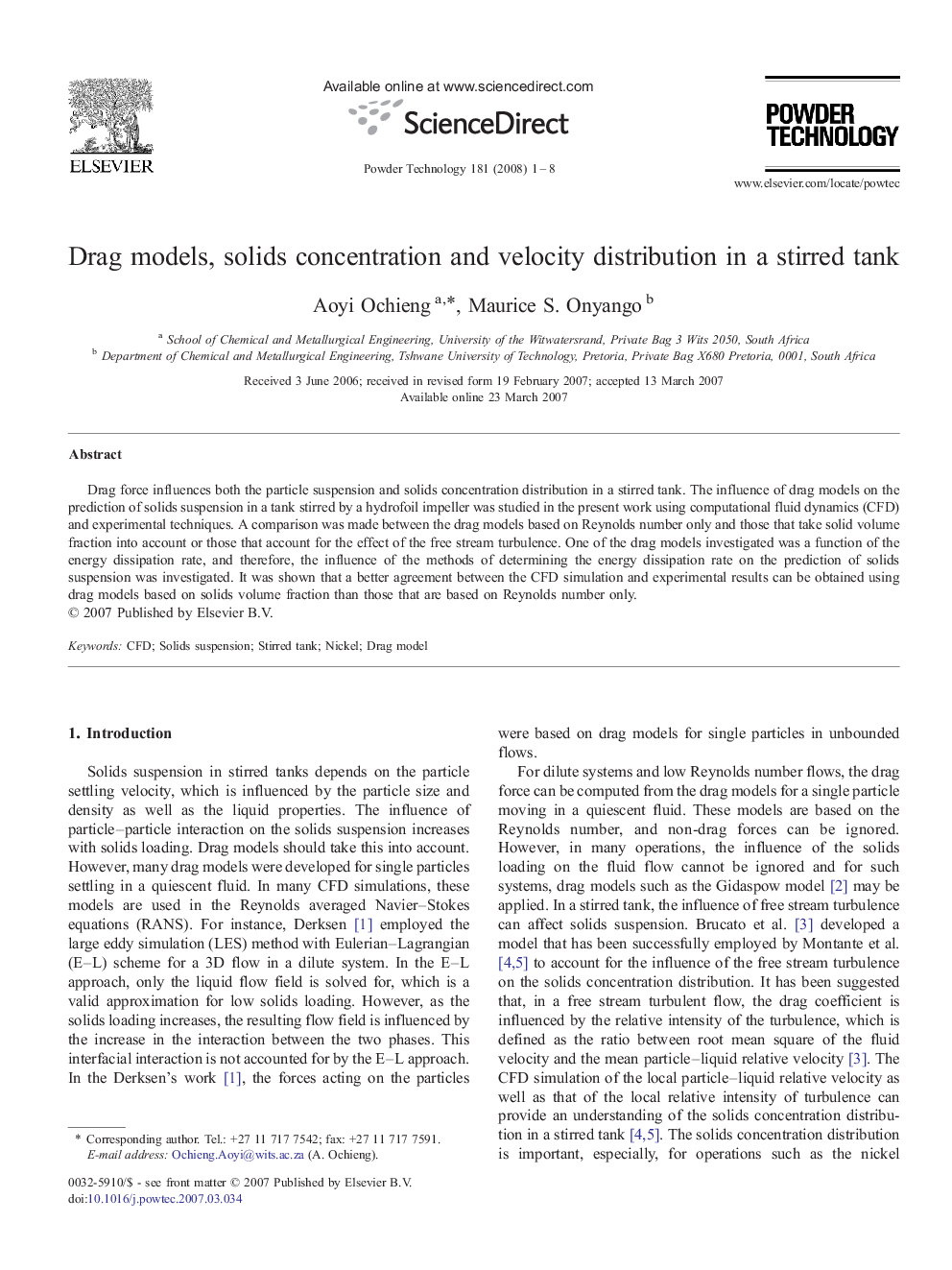| Article ID | Journal | Published Year | Pages | File Type |
|---|---|---|---|---|
| 238953 | Powder Technology | 2008 | 8 Pages |
Drag force influences both the particle suspension and solids concentration distribution in a stirred tank. The influence of drag models on the prediction of solids suspension in a tank stirred by a hydrofoil impeller was studied in the present work using computational fluid dynamics (CFD) and experimental techniques. A comparison was made between the drag models based on Reynolds number only and those that take solid volume fraction into account or those that account for the effect of the free stream turbulence. One of the drag models investigated was a function of the energy dissipation rate, and therefore, the influence of the methods of determining the energy dissipation rate on the prediction of solids suspension was investigated. It was shown that a better agreement between the CFD simulation and experimental results can be obtained using drag models based on solids volume fraction than those that are based on Reynolds number only.
Graphical abstractThe influence of drag models on the prediction of nickel particles suspension in a tank stirred by a hydrofoil impeller was studied in the present work using computational fluid dynamics (CFD) and experimental techniques. A comparison was made between the drag models based on Reynolds number only and those that take solid volume fraction into account or those that account for the effect of the free stream turbulence. It was shown that a better agreement between the CFD simulation and experimental results can be obtained using drag models based on solids volume fraction than those that are based on Reynolds number only. Effect of drag models on the solids concentration distribution for 1.3% loading of Ni750 at Njs: (----) Brucato; (¾¾) Schiller-Naumann; (000) Gidaspow; (o) Experiments.Figure optionsDownload full-size imageDownload as PowerPoint slide
